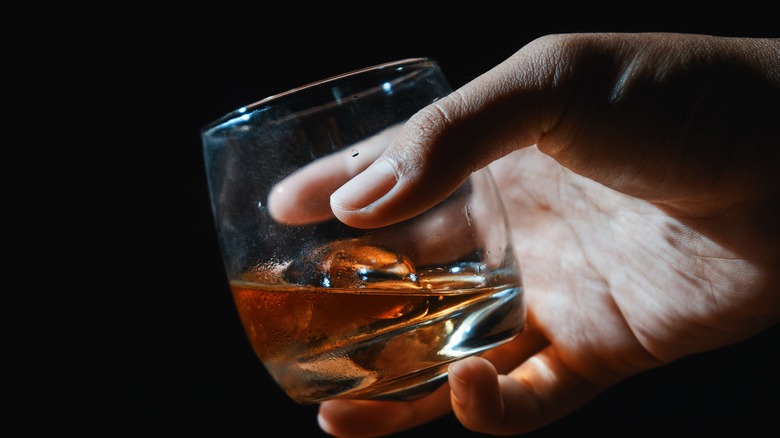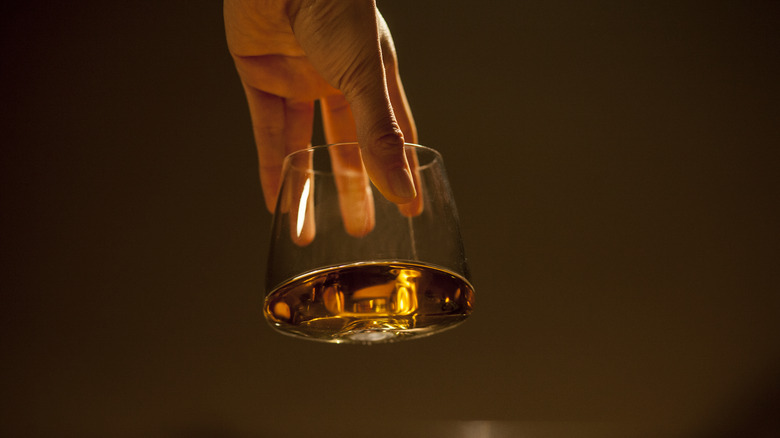How To Tell Good Whiskeys Apart From Bad
If you're a relatively experienced whiskey drinker, you know what a good one should taste like. I wouldn't necessarily say that I'm an expert — unlike the real expert we spoke to for this article — but I can certainly discern between a top-shelf pick like Blanton's and ubiquitous cheap stuff like Jack Daniel's (which, in my opinion, barely even counts). Still, if you're just getting started with whiskey as a concept, you might not know the hallmarks of a truly good one. Enter Robyn Smith, a spirits maven who founded the experimental distillery rum et al.
Smith spoke exclusively to The Takeout about how she uses a spirit's aroma to find the difference between high-quality and low-quality whiskeys, whether you're dealing with bourbon or Scotch. As Smith put it, she goes in with an open mind and lets the whiskey prove itself. "I try not to look for any notes in particular but rather let the aromas present themselves," she told us. "When you're first starting out, it can be helpful to have a tasting wheel nearby [...] As far as quality goes, I look for complexity of aromas and low alcohol heat on the nose. If I can nose a spirit for several minutes and continue picking out different aromas, then it's usually a sign of a high-quality spirit."
Assessing a whiskey is partly about personal preferences
In contrast to parsing out the best whiskeys, how do you decide what makes a bottle low-quality? According to Robyn Smith, that answer is a little more complicated... largely because some people just aren't going to like specific types.
While some really love a smoky, peaty Scotch whisky, others might not, and Smith says personal preference could enter a grey area with quality. "For example, some view overly phenolic and smoky notes as a flaw, while others view it as a style," she said. "Similarly, the struck match note you get in some Scotches made with worm tub condensers can be considered insufficient copper contact during distillation to some, while others view it as part of their house character."
Still, there are some universal signs of a lower quality. Smith said, "One is that it smells and tastes 'strong,' but isn't at a high proof or cask strength. Another is that it smells and tastes one-noted [...] complexity is a sign of a high-quality spirit." With that being said, personal preference still plays a big role — but you'll want to make sure your sniffing technique is on point to follow Smith's advice.
Good whiskey doesn't have to break the bank
After all this, you might be worried about shelling out too much money for a bottle of merely half-decent whiskey. I'll admit that I've paid quite a bit for bottles throughout my life, but I'm also always on the lookout for an affordable whiskey that's good enough to sip neat (like Buffalo Trace, which has seen a recent boom in sales after everyone figured out it's a total steal). Luckily for us, Robyn Smith says that a whiskey doesn't have to be 30 years old or cost hundreds of dollars to be worth drinking, and she's got the receipts.
"There are definitely amazing whiskeys that are young and affordable that are leagues above older and much more expensive whiskeys," Smith told us. "So no, a whiskey's quality is not correlated with its age or its price. For example, the poitíns coming out of Killowen Distillery in Ireland are incredibly complex and high quality, and they are either unaged or rested for only a handful of months. They're not going to break the bank either."
So there you have it — go taste some whiskeys, find one you like, and don't feel like you have to empty your bank account to do it. I know I'll be looking for a new favorite whiskey using Smith's tips pretty soon.


